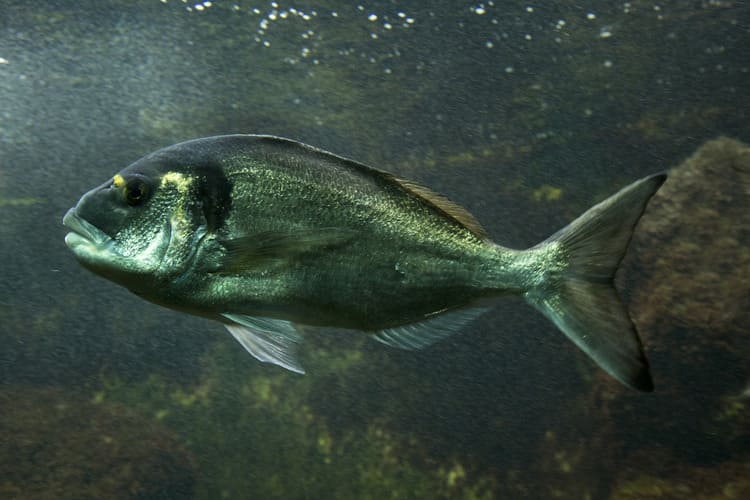Reductions in fish oil content in aquafeeds can generate physiological and immunological disorders in farmed fish, associated to low dietary levels of n-3 long chain polyunsaturated fatty acids (n-3 LC-PUFAs) and increased levels of n-6 PUFAs. Based on mammalian literature, spices could potentially counteract some of these negative effects. To explore this hypothesis, this work intended to offer a holistic insight on the effect of supplementing a diet (44% crude protein, 18% crude fat, 21.4 MJ kg 1 gross energy) containing low (3%) fish oil and poultry fat as the main oil source (43% of added oils) with 0.2% of an encapsulated combination of spice oleoresins (SO) including turmeric, capsicum, black pepper, and ginger in gilthead seabream (Sparus aurata, 44.1 ± 4.1 g). At the end of the trial (90 days), fish fed with the SO diet displayed lower levels of perivisceral and hepatic fat, as well as reduced accumulation of lipid deposits, assessed histologically, in liver and intestine. These findings were consistent with an increased activity of bile salt-activated lipase in the anterior intestine and the regulation of gene expression (qPCR) of several biomarkers related to lipid metabolism, including several key metabolic sensors and nuclear factors (hnf4a and srebp2 at 2 h after feeding and lxrα, fxr, pparγ, pparβ, sirt1 in 48 h-fasted fish) that coordinate the expression of a network of genes (many of them significantly affected herein) regulating lipid, cholesterol and bile acid homeostasis. Moreover, the combination of SO had an immunomodulatory effect in the intestine which reached its climax in 48 h fasted-fish with the down-regulation of the pro-inflammatory cytokines tnf-α, il-12β, il-15, il-34 and cell markers cd4–1, cd8b, and ccr11, suggesting a potential antiinflammatory response. No major effects were noted on fish growth and feed performance, on the oxidative status of the fish (although there were some subtle indications of reduced hepatic ROS levels). When assessing the gut microbial communities of gilthead seabream (16S rRNA gene sequencing on Illumina MiSeq) there were no differences in alpha and beta diversity between both experimental diets in the anterior and posterior intestines, except for an increase in the relative abundance of Bacteroides, Desulfovibrio, Candidatus Arthromitus, and Ralstonia. In conclusion, supplementation of diets with the tested combination of SO may be an effective strategy to prevent lipid accumulation and inflammation in fish fed diets containing reduced fish oil levels.

Autores: Alberto Ruiz, Ignasi Sanahuja, Karl B. Andree, Dolors Furones, Paul G. Holhorea, Josep A. Calduch-Giner, Jose J. Pastor, Marc Viñas, Jaume Pérez-Sánchez, Sofia Morais, Enric Gisbert
Libro/Revista: Aquaculture 581 (2024) 740378
